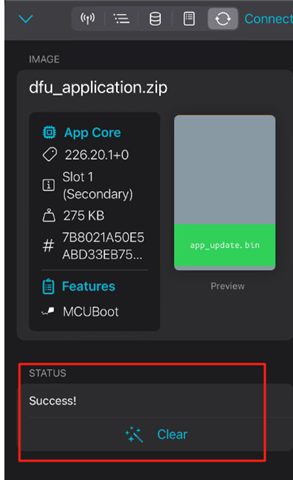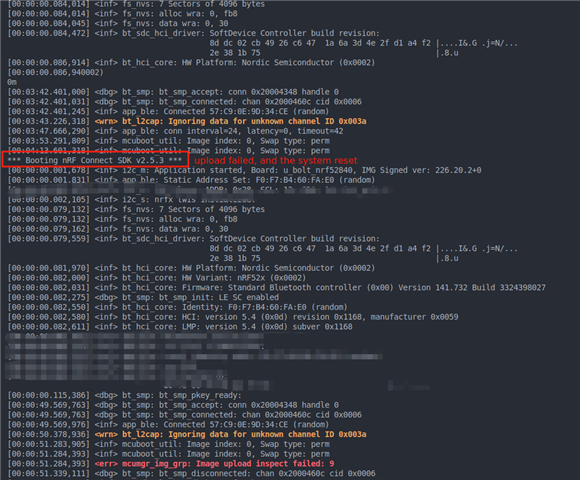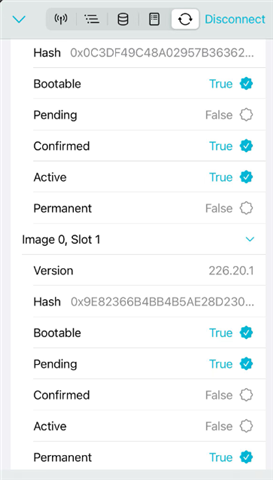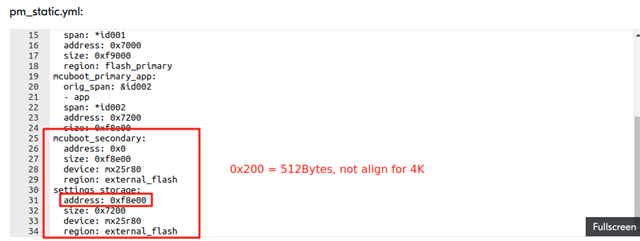I am using Bluetooth for DFU in NCS version 2.6.1, but I encountered an issue in Device Manager that says, "There is no free slot to place the image." In the JLINK RTT, I received the following information:


&flash0 {
partitions {
compatible = "fixed-partitions";
#address-cells = <1>;
#size-cells = <1>;
boot_partition: partition@0 {
label = "mcuboot";
reg = <0x00000000 0x0000C000>;
};
slot0_partition: partition@c000 {
label = "image-0";
reg = <0x0000C000 0x00075000>;
};
slot1_partition: partition@81000 {
label = "image-1";
reg = <0x00081000 0x00075000>;
};
scratch_partition: partition@E8000 {
label = "image-scratch";
reg = <0x000E8000 0x00010000>;
};
/*
* The flash starting at 0x000f8000 and ending at
* 0x000fffff is reserved for use by the application.
*/
/*
* Storage partition will be used by FCB/LittleFS/NVS
* if enabled.
*/
storage_partition: partition@f8000 {
label = "storage";
reg = <0x000f8000 0x00008000>;
};
};
};[8/16] Linking C executable zephyr/zephyr.elf Memory region Used Size Region Size %age





